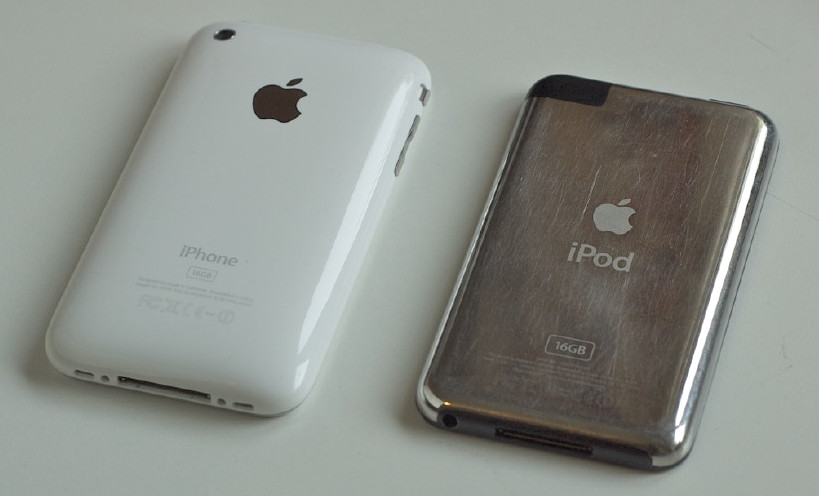|
|

I bought a 16G iPod touch over a year ago and this has benefited from iPhone development as the services expanded for both, and web apps, then apps themselves were introduced. I do a lot of work on the touch as well as play music (and occasionally, games). When I can get a wifi link, I value the email facilities for when I am away from home. I sometimes use the worldwide web as well. The iPhone that I have is unlocked, so I was able initially to use it with the original True SIM, then tried alternatives.
To hold, the iPhone is clearly fatter, while the way the back tapers back from the sides can be seen -- and felt -- quite easily. I was not sure about the white polycarbonate back (it also comes in a black finish) after the shiny metal of the original. My touch also has that original finish and the shine quickly diminished as I am not that careful with it. The glass screen is as clear as the day it came out of the box. The iPhone's new back is far more resistant and I am quite happy with this change. There are a number of advantages that the iPhone has over the iPod touch, apart from the obvious ability to make phone calls and send SMS messages. I turned on call-forwarding for my usual phone number which I made good use of, but this does not work for messaging, of course. The first comments at my house were on the camera. At 2 Mega Pixels many commentators have been critical. However, when I took a couple of images at home, there were noises of approval. As a test, I was able to export one of the images in TIFF format in a file of 11MB which had a size of 16 x 22 inches. Trying to to enlarge them any more was perhaps over-ambitious, but these images are usable for web work and a bit more. It is not just the lens, or the chip, but both of these along with the software that I guess adjusts the virtual ISO rating, so that without a flash, in darker conditions any photographs were somewhat grainy. There are expected to be improvements and photographs taken with the beta of the 3.0 software update due in June, are reported to be even better.

With the GPS and Google Maps on the iPhone I was able find my location on a map (or satellite image). This uses Skyhook or 3G, when available instead of GPS, but in the central area of Bangkok there is a problem currently with True's test 3G service and wrong locations are given around Siam Paragon and Central World. A couple of test photographs of the Siam Paragon mezzanine, recorded the location as Sofia, Bulgaria. This is to be fixed soon, I am told. Just a couple of hundred metres from Central World, the co-ordinates were reported correctly, so it is just that area round Siam. I have also tried map locations where I live, and in several other places in Thailand. I am currently in the UK where it also reports locations accurately.

|
|

